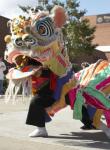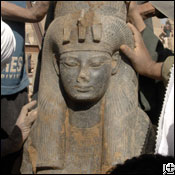
Has the Spirit of Otzi the Iceman claimed another victim? Has Frozen Fritz fingered the seventh man who disturbed his grave?
When a naked human body was found trapped in the ice at an altitude of 10,500 feet up the Alps in 1991, he was at first thought to be a lost hiker. But Otzi is from 3300 BCE. He was a dark-complexioned man in his 40s, about 5-feet 2-inches tall, some healing fractured ribs, and arthritis. He also had a stone arrowhead embedded in his left shoulder. In addition, traces of blood from four other people have been found on his clothes and weapons, Otzi didn't die peacefully.
Otzi's Curse: And, like the Curse of the Pharoahs, there are stories of the Curse of the Iceman. Now eight deaths are attributed to the 'curse'.
One - Rainer Henn, forensic pathologist, who picked up Otzi's body, killed on his way to a conference to discuss Otzi
Two - Kurt Fritz, who uncovered the Iceman's face, accident
Three - Journalist Rainer Hoelz, who filmed the recovery of Ötzi from the ice for the ORF network, died of a brain tumor.
Four - Helmut Simon who discovered the Iceman's body, froze to death in the snow
Five - Dieter Warnecke, Simon's assistant, who died of a heart attack hours after Simon's funeral.
Six - Archeologist Konrad Spindler, leading expert on Otzi.
Seven - Molecular biologist Tom Loy who examined Otzi's DNA, died in unclear circumstances in Australia last November
Eight- Professor Friedrich Tiefenbrunner, member of Spindler's team, died during open-heart surgery earlier this month
 The number 8 is a hot favorite at the moment. Just after Chinese New Year, it's a perfect choice. Even numbered days are considered lucky, the 2nd and 8th day of the New Year being the most popular, and don't forget to wear red on these days for extra luck.
The number 8 is a hot favorite at the moment. Just after Chinese New Year, it's a perfect choice. Even numbered days are considered lucky, the 2nd and 8th day of the New Year being the most popular, and don't forget to wear red on these days for extra luck.

















